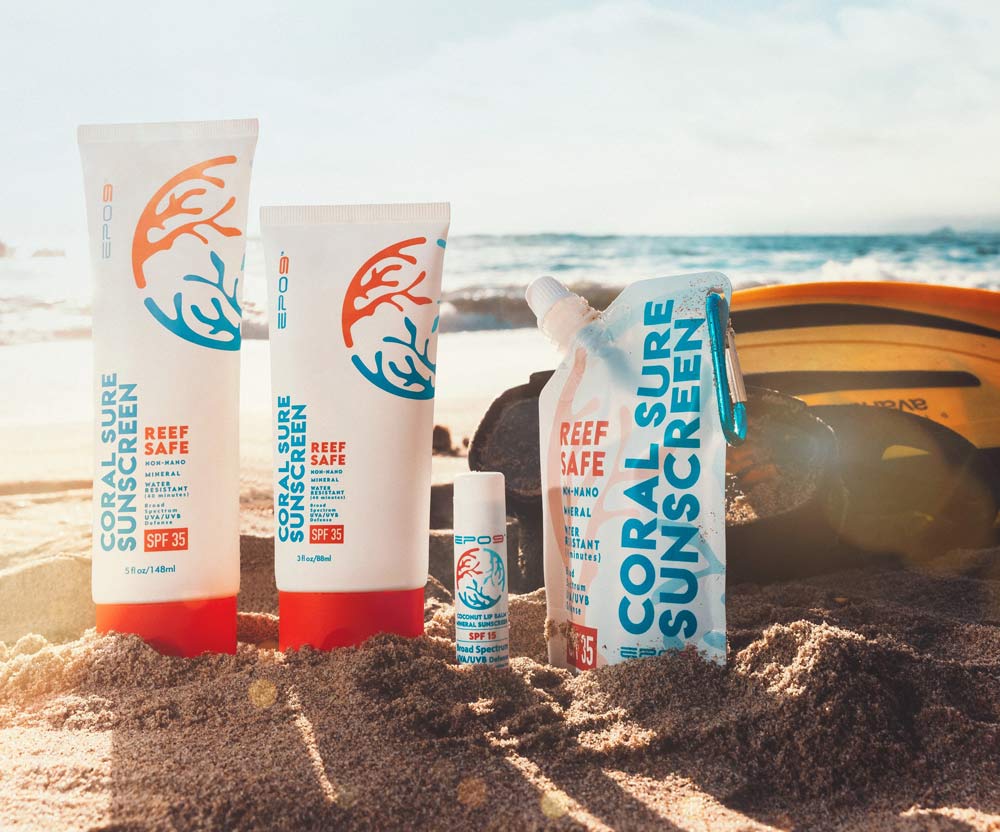Think that any old sunscreen will do when diving?
If you’re the kind of diver that grabs whatever sunscreen they have in the store without further thought, think again.

There are several reasons why you should be careful about your choice of sunscreen on your next dive vacation. Let’s start with the obvious: You’ll want to consider the SPF rating (anything above SPF 30 is recommended). You’ll want to make sure you have a sunscreen that offers broad spectrum protection, (i.e. against all of the sun’s harmful UV rays). If you’re going in the water, you’ll want to be confident that it is water resistant too, naturally.
Sunscreens come in all shapes and sizes but can be boiled down to two main categories: sunscreens with either chemical or mineral active ingredients. You should always select a mineral formula over a chemical sunscreen for these two simple but compelling reasons:
Consider the coral polyp.
Our unsung hero of the underwater realm. A tiny invertebrate, all mouth and tentacles, in some instances no bigger than a pinhead. Day after day the polyp dauntlessly toils to turn the limestone found in seawater into wonderous coral gardens which become home to a multitude of diverse marine eco-systems. Some polyps are believed to be able to continue these feats of creation for as long as 5,000 years …that is until they come into contact with your chemical sunscreen, the undisputed villain of this piece.
We now know, conclusively, that commonly used chemical sunscreen ingredients such as oxybenzone, avobenzone, octinoxate, parabens and nano-particles can be ingested by our unsuspecting friend, the coral polyp, irreversibly damaging their DNA and having an effect similar to when ocean temperatures rise – the leading cause of coral bleaching events. Eventually, after contact with the chemicals in your sunscreen the polyp will die and crumble to dust on the ocean floor. Each year an estimated 14,000 tons of chemical sunscreen washes off swimmers, snorkelers, and divers into coral reef environments.
Warning: Not all mineral sunscreens are alike. Unfortunately the terms “reef friendly” and “reef safe” are not regulated, so you can’t always trust products with this description. It’s important to actually check the “active ingredients” label on the back of your sunscreen to ensure that reef-harming chemicals such as oxybenzone, octinoxate, and avobenzone are not included.
Consider… you!
Maybe you’re one of those few divers that doesn’t care about the poor polyp? It’s a dog-eat-dog world out there. Survival of the fittest invertebrate, and all that. Perhaps you’re exclusively a wreck diver who cares nothing for the blooming splendor of a Carnation coral?
That’s fair enough, you say. You’re still a responsible diver. You regularly test your kit. You always do your pre-dive buddy checks. After all, you’re not an idiot. And, of course you care about your own safety and well-being…
Well, then it may surprise you to learn that recent studies have shown that many of the common chemical ingredients used in sunscreens are absorbed into the body’s bloodstream at concentration levels higher than the FDA’s safety threshold. Put simply, chemical sunscreens are bad for you. The problem is that sunscreens are often applied every day and chemical sunscreens, by their very nature, are absorbed into the body through the skin (unlike mineral sunscreens which sit on top of the skin). The concerns are that the chemicals can disrupt hormones in the body, cause irritations and allergies, have the potential to cause cancer, and cause harm during reproduction and development.
Store bought chemical sunscreens are not just harmful to the environment, they are potentially harmful to you too. This is why the FDA have consistently said (since February 2019) that only mineral sunscreens with an active ingredient of either zinc oxide or titanium dioxide are considered to be “GRAS” (Generally Recognized As Safe).
But mineral sunscreens are yucky.
Some are, that’s true. We’ve all been there: furiously kneading away at your own flesh; freshly coated in a thick pasty mineral sunscreen which refuses to rub in beyond ‘Purple Pizzazz’ on the Pantone color chart! But there are now one or two game changing reef safe sunscreens that can be applied like a chemical sunscreen without leaving that pasty hue.
Whether you’re going into the water or not, you should only ever use a broad spectrum mineral-based sunscreen. The coral polyp and your body will thank you.
Better for you. Better for the environment.

Leave a Comment







